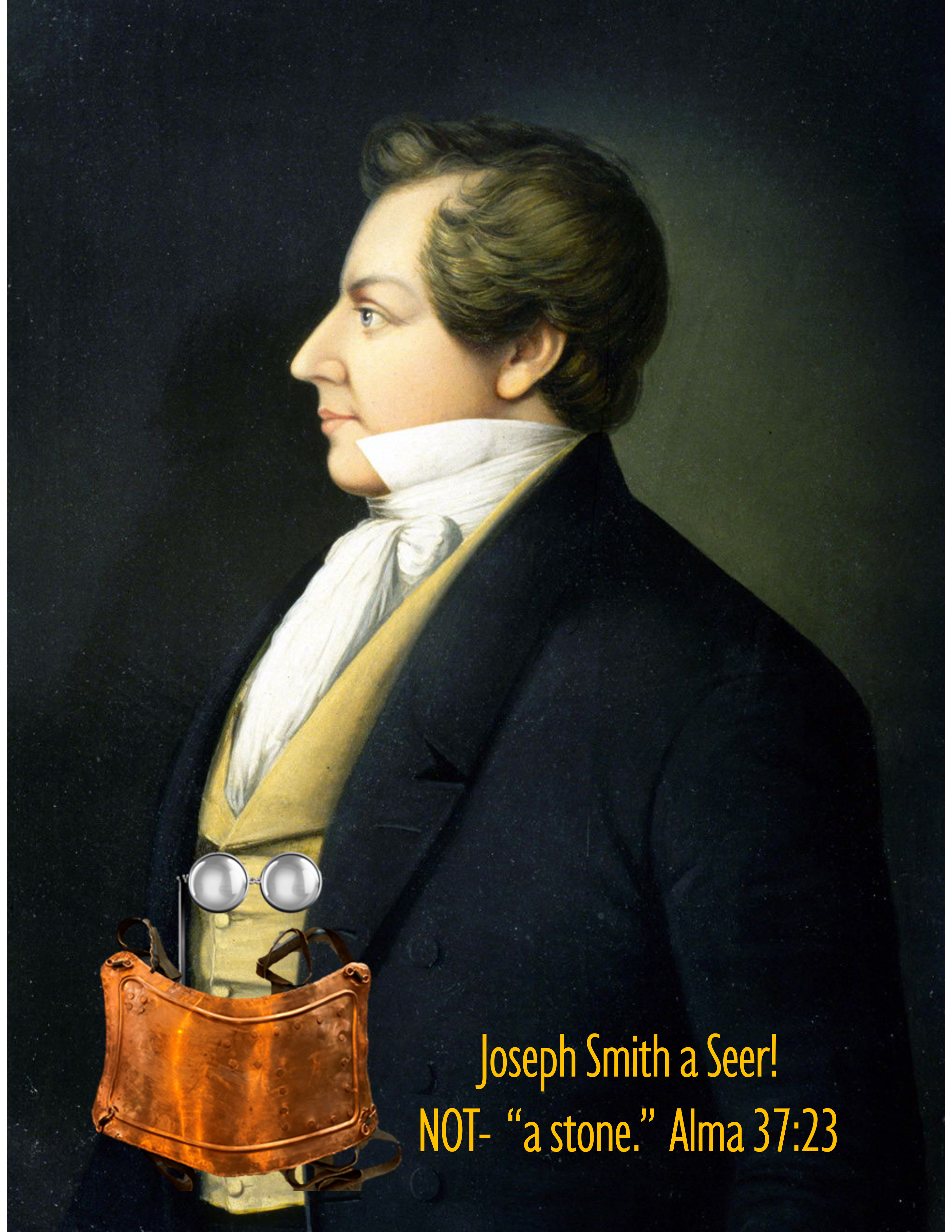Joseph used the “Interpreters”, not a Stone in a Hat

Did you know, that nowhere in the translated Book of Mormon are the words, Urim and Thummim used? Only the word Interpreters. Joseph and others eventually used the name Urim and Thummim to call the Interpreters, but this Urim and Thummim was not the same as the one used in the Bible. Many scholars incorrectly say that Urim and Thummim is the substitute name for “a stone”, but I don’t believe this and the scriptures don’t say it either.
Also where do you think the name Interpreters came from? The Bible? No! The D&C? No! It came from the Lord who touched “two additional stones” [Plus the 16 original stones for the barges], for the brother of Jared in Ether 3 which says, “And behold, these two stones will I give unto thee, and ye shall seal them up also with the things which ye shall write.” Ether 3:23. Also read in Ether 4 that says, “Wherefore the Lord hath commanded me to write them; and I have written them. And he commanded me that I should seal them up; and he also hath commanded that I should seal up the interpretation thereof; wherefore I have sealed up the interpreters, according to the commandment of the Lord.” Ether 4:5

So, in other words the Lord touched two stones for the brother of Jared (About 2000 to 2200 BC after the Great flood of about 2345 BC, as Dean Sessions has researched). These two stones were in addition to the sixteen stones for the barges. These same two stones were found in the stone box of Hill Cumorah by Joseph (1823), with the breastplate and the gold plates. There was no Sword of Laban and no Liahona in this stone box, but these two items were in the Cave at Cumorah with the wagon loads of Jaredite and Nephite records in the same Hill Cumorah of NY at a different location of the hill than the stone box, as Brigham Young was told, and Wilford Woodruff said, “[Joseph] went [into] a Cave in the Hill Comoro with Oliver Cowdry & deposited those plates upon a table or shelf. In that room were deposited a large amount of gold plates containing sacred records… Joseph Smith said that cave contained tons of choice treasures & records.” Wilford Woodruff Journal, 11 December 1869
Lucy Mack Smith’s Journal
We also know from Lucy Mack Smith’s journal that she saw the spectacles under a linen and also saw separately the breastplate under a covering. Both were handed to her by Joseph Smith who had promised the Lord to not show these items to anyone unless instructed. So, in a very special way Lucy was a firsthand witness that the spectacles and breastplate were real.
 Of note, Lucy Mack Smith said, “That of which I spoke, which Joseph termed a key, was indeed nothing more nor less than a Urim and Thummim by which the angel manifested those things to him that were shown him in, vision; by which also he could at any time ascertain the approach of danger, either to himself or the record, and for this cause he kept these things constantly about his person.” To me, Lucy’s words mean the spectacles and breastplate were “constantly about his person”, and close by to use at any given moment, such as the time in history when Joseph saw through the Urim and Thummim, Emma coming on a horse while Joseph was digging a ditch. Story Here in the JSP
Of note, Lucy Mack Smith said, “That of which I spoke, which Joseph termed a key, was indeed nothing more nor less than a Urim and Thummim by which the angel manifested those things to him that were shown him in, vision; by which also he could at any time ascertain the approach of danger, either to himself or the record, and for this cause he kept these things constantly about his person.” To me, Lucy’s words mean the spectacles and breastplate were “constantly about his person”, and close by to use at any given moment, such as the time in history when Joseph saw through the Urim and Thummim, Emma coming on a horse while Joseph was digging a ditch. Story Here in the JSP
Lucy also said, “After breakfast [on the day he received the plates and the urim and thummim] Joseph [Smith] called me into the other room and he set his foot on the bed and leaned his head on his hand and says,… “it is ten times better then I expected.”  Then he went on to tell the length and width and thickness of the plates, and said he, “they appear to be gold.” But he seemed to think more of the glasses or the urim and thummim than he did of the plates, for, says he, “I can see anything; they are marvelous.” (“Joseph Knight’s Recollection of Early Mormon History,” BYU Studies, spelling not corrected)
Then he went on to tell the length and width and thickness of the plates, and said he, “they appear to be gold.” But he seemed to think more of the glasses or the urim and thummim than he did of the plates, for, says he, “I can see anything; they are marvelous.” (“Joseph Knight’s Recollection of Early Mormon History,” BYU Studies, spelling not corrected)
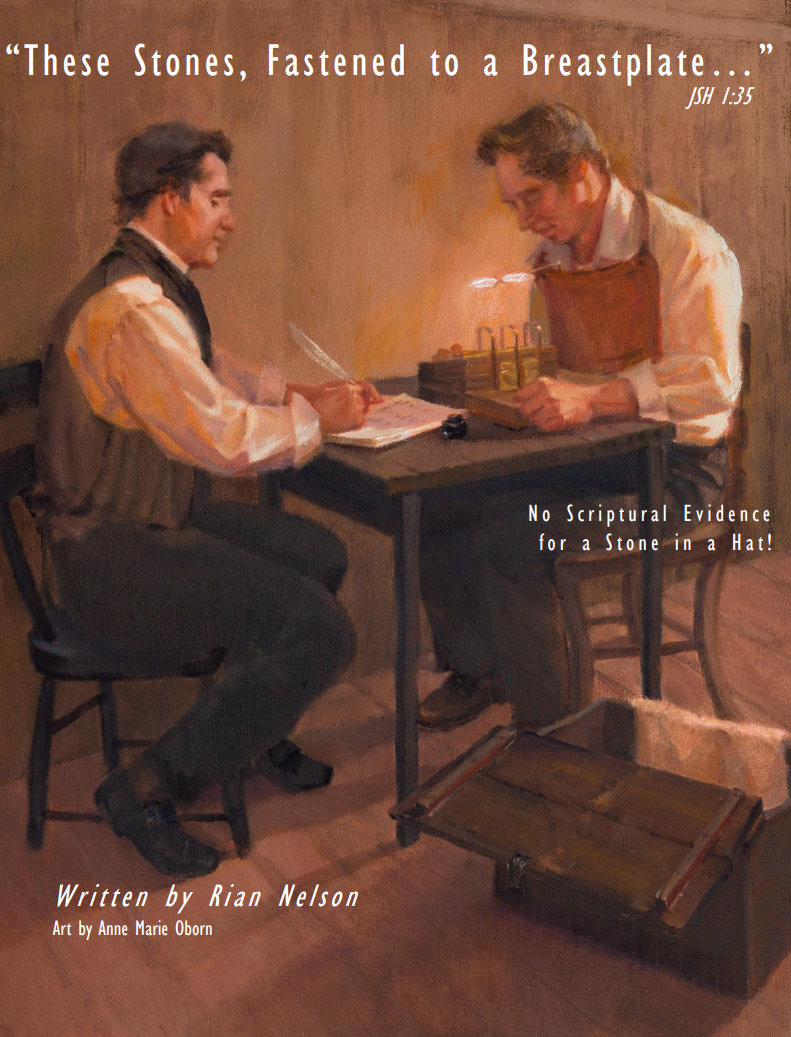
Through study and long research, I believe that the spectacles were stored in a pouch on the back of the breastplate [picture above] and were quickly accessible by Joseph. During translation, I believe the spectacles had a connected rod that was fastened to the breastplate. Oliver said he had seen the Interpreters so the Lord probably gave him permission to see the items. [See Painting Left].
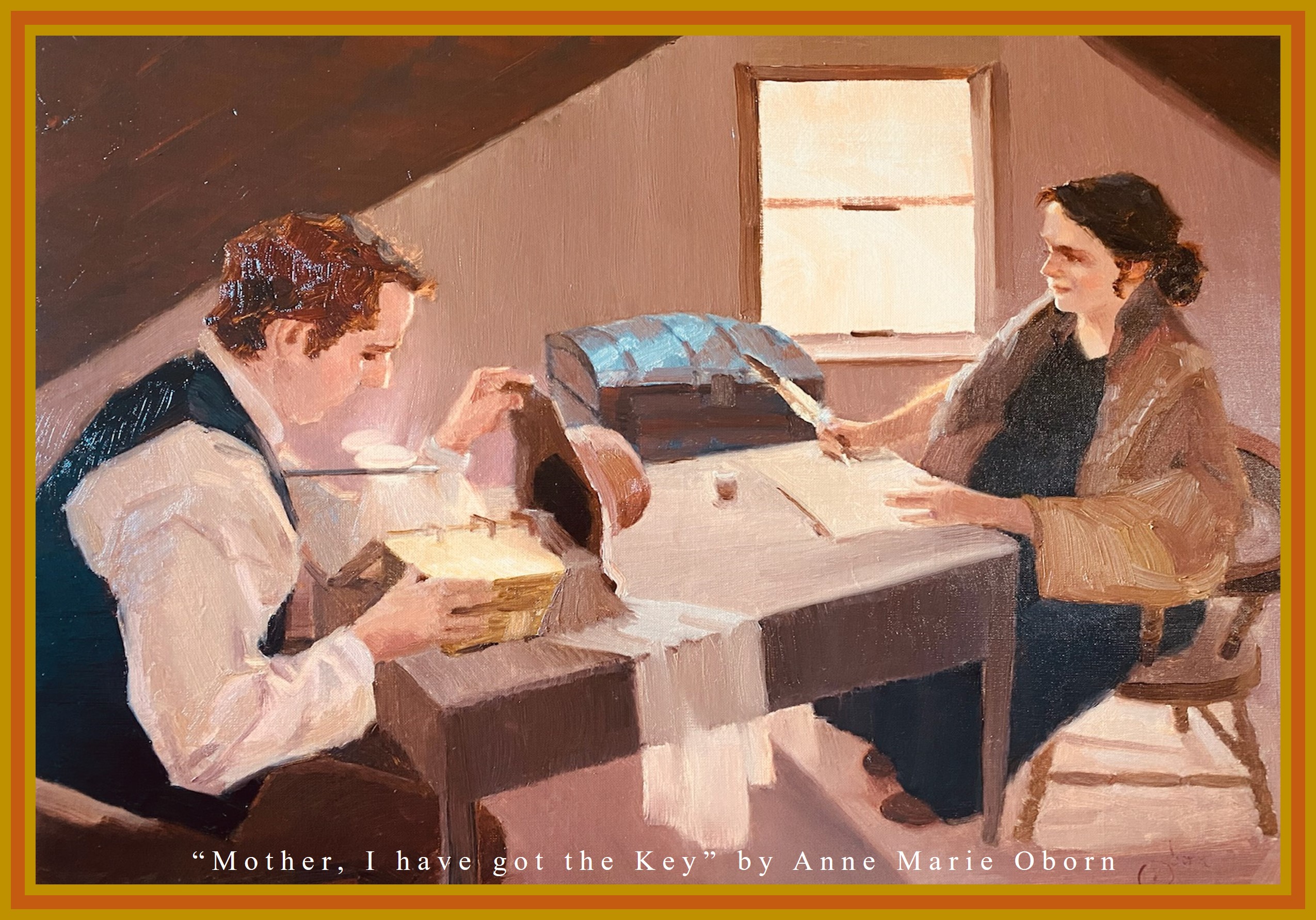
Emma and Martin Harris never claimed to have seen the Interpreters, so while they transcribed for Joseph, the breastplate was probably under Joseph’s shirt during translation with Joseph’s farmers hat held by Joseph to block the view of Emma, so she couldn’t see the spectacles. [See Painting Right]. The spectacles were not “in” the hat, but just used to keep them out of sight. More detail in my 2022 [left] book titled, “These Stones Fastened to a Breastplate” by Rian Nelson
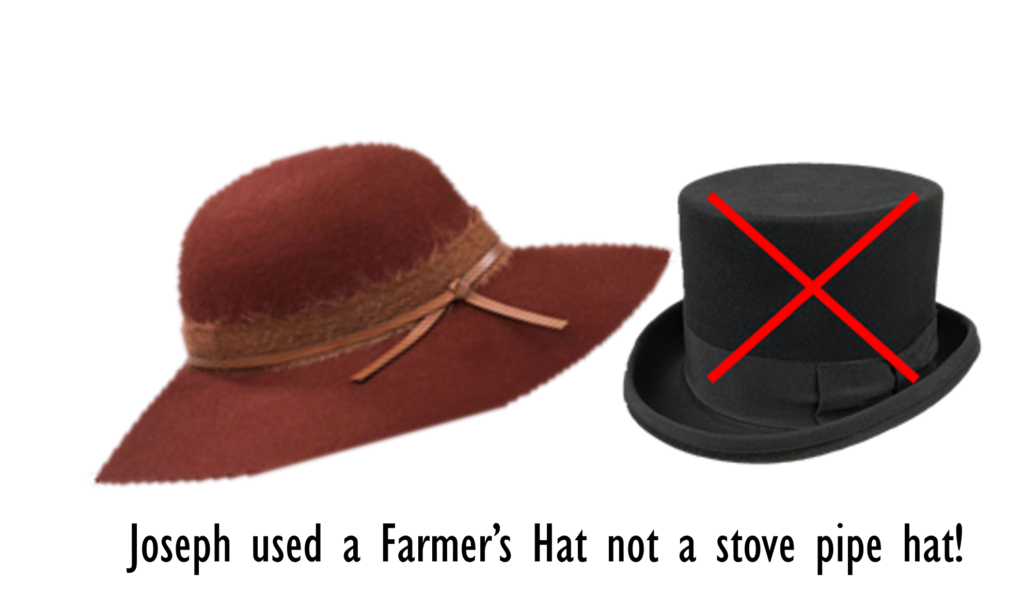 During translation I propose Joseph used a farmer’s hat that he probably wore daily to work on the farm. (picture right). A young boy would most likely only use a stove pipe hat for a dance or for proper attire, but his working hat would be with him almost constantly you would think. This hat I believe was not used with a stone in it, but as a tool or prop to hide the two stones in a bow or the spectacles from the view of the scribe, as you see in the picture left. The hat is nothing more than a prop to block out Emma’s vision.
During translation I propose Joseph used a farmer’s hat that he probably wore daily to work on the farm. (picture right). A young boy would most likely only use a stove pipe hat for a dance or for proper attire, but his working hat would be with him almost constantly you would think. This hat I believe was not used with a stone in it, but as a tool or prop to hide the two stones in a bow or the spectacles from the view of the scribe, as you see in the picture left. The hat is nothing more than a prop to block out Emma’s vision.
Detailed blog here called, Scriptural Evidence – Interpreters, not a Stone in a Hat!
A Seer, is A Stone!
Alma 37:23-25
One of my favorite scriptures, and a very misunderstood one says, “And the Lord said: I will prepare unto my servant Gazelem, a stone, which shall shine forth in darkness unto light, that I may discover unto my people who serve me, that I may discover unto them the works of their brethren, yea, their secret works, their works of darkness, and their wickedness and abominations. And now, my son these interpreters were prepared that the word of God might be fulfilled, which he spake, saying: I will bring forth out of darkness unto light…” Alma 37:23-25
The scholars at BYU and many historians use this scripture to prove Joseph Smith used a single stone in a hat to translate. Why? Because it mentions only “a stone”, singular. This is the only place in scripture about the possible translation that does not speak about “these stones” plural, or Urim & Thummim plural, or Interpreters plural, or two stones in the rims of a silver bow” plural. I will explain why the words, “a stone” really mean “a seer” in this article.
The above scripture as translated by Joseph Smith may seem confusing because someone other than Joseph, added a comma between the word Gazelem[,] and a stone. As you will see below the word Gazelem in Alma 37 seems to be a title and refers to Joseph Smith and a stone seems to mean, a Seer. In the 1835 Edition of the D&C, you will see that Joseph Smith was originally named Gazelam, Newel K. Whitney was called Ahashdah and Sidney Rigdon was called Pelagoram.
Gazelem may also be the name or Title of a Seer, or the Name of Joseph Smith, or the name Gazelem may be a title meaning “a Stone” like in the name for Peter in the Bible. We read in the Bible, “That thou art Peter, and upon this rock I will build my church; and the gates of hell shall not prevail against it.” Matthew 16:18. I believe like in Alma 37 a stone could mean, “Revelation”, or a Seer, or to Reveal, etc.
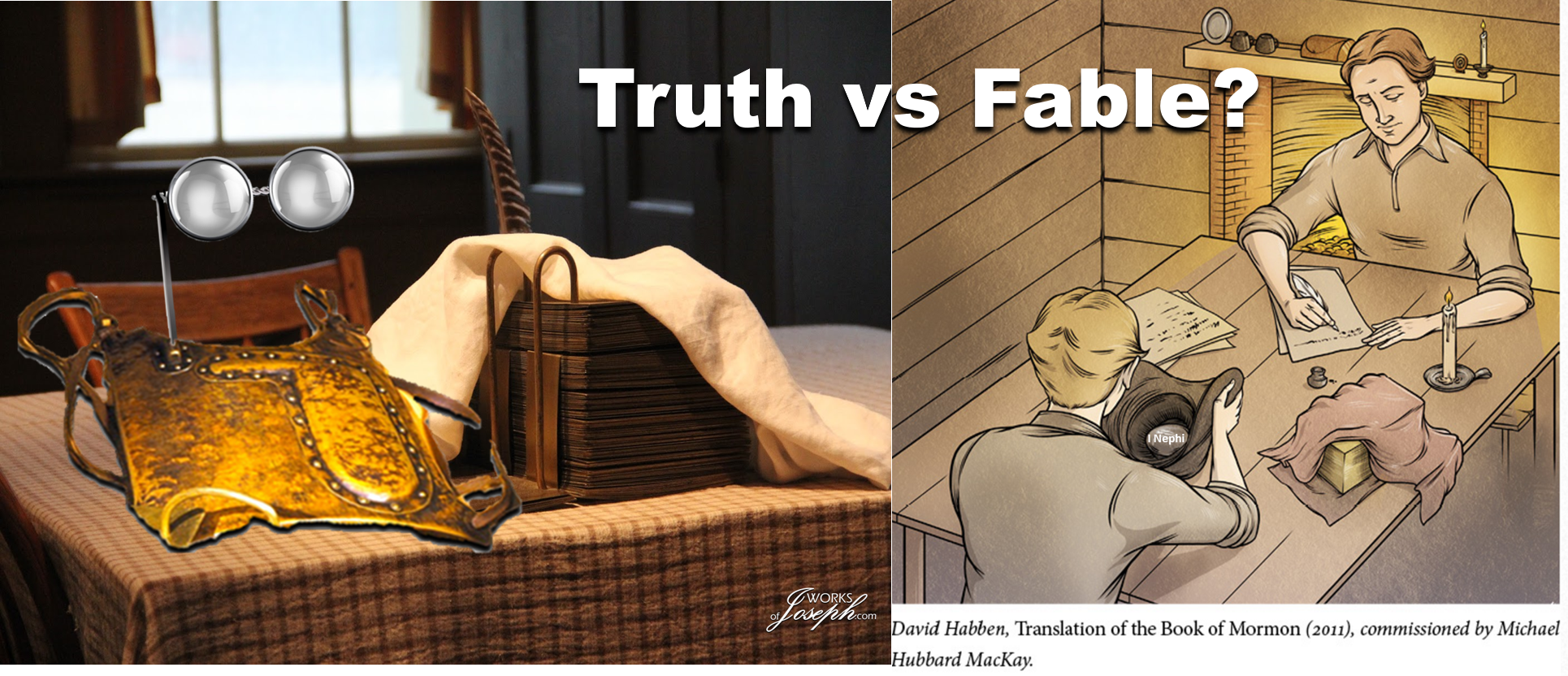
Elder Hunter said about Matthew 16, “This is a very significant statement. The Lord in effect said to Peter that this knowledge that Jesus was the Christ did not come to him from mortal men or from the reasoning or learning of men, but by revelation from on high, that is, direct, divine revelation of the divinity of the Master. In answer to the statement ‘Thou art the Christ’ Matt. 16:16, Jesus replied, ‘. . . thou art Peter’ Matt. 16:18, in friendly acknowledgment of his disciple. The Lord then added, ‘. . . and upon this rock I will build my church’ Matt. 16:18. Upon what rock? Peter? Upon a man? No, not upon a man, upon the rock of revelation, the thing which they were talking about. He had just said, ‘. . . flesh and blood hath not revealed it unto thee, but my Father which is in heaven’ Matt. 16:17. This revelation that Jesus is the Christ is the foundation upon which he would build his Church.” Conference Report, October 1965, Howard W. Hunter.
Cephas means “Seer” or “Stone.”
“And he brought him to Jesus. And when Jesus beheld him, he said, Thou art Simon, the son of Jona, thou shalt be called Cephas, which is, by interpretation, a seer, or a stone. And they were fishermen. And they straightway left all and followed Jesus.” JST John 1:42
 Compare John 1:42 KJV which says, “And he brought him to Jesus. And when Jesus beheld him, he said, Thou art Simon the son of Jona: thou shalt be called Cephas, which is by interpretation, A stone.”
Compare John 1:42 KJV which says, “And he brought him to Jesus. And when Jesus beheld him, he said, Thou art Simon the son of Jona: thou shalt be called Cephas, which is by interpretation, A stone.”
So Gazelem in Alma 37 could read like this: “And the Lord said: I will prepare unto my servant [Joseph Smith a Seer], which shall shine forth in darkness unto light, that I may discover unto my people who serve me, that I may discover unto them the works of their brethren, yea, their secret works, their works of darkness, and their wickedness and abominations. And now, my son these interpreters were prepared that the word of God might be fulfilled, which he spake, saying: I will bring forth out of darkness unto light…” Alma 37:23-25
Notice that with the quote from Alma 37 including the words Joseph Smith a Seer, without the comma between Gazelem[,] a stone it would read that Joseph Smith was being called Gazelem as his personal name, or Gazelem as a title that is “a seer”, and the singular word “a stone” would arguably mean in this case a seer, which means Joseph Smith or Gazelem is “a seer”, not “a singular stone.” As JST 1:42 says, “by interpretation, a seer, or a stone”, where a stone could mean a seer. It makes more sense that Joseph Smith is a seer, and not a stone.
Plural, “Interpreters” Refers to the Two Stones
Also, the Lord continues after calling Joseph Smith a Seer, he later in Alma 37 says “these interpreters“, not a singular stone, but a plural saying, “these interpreters.” We also know through scripture that the plural “interpreters” refers to these two stones, fastened to a breastplate, as canonized scripture says, in JSH 1:35 that says, “Also, that there were two stones in silver bows—and these stones, fastened to a breastplate, constituted what is called the Urim and Thummim—deposited with the plates; and the possession and use of these stones were what constituted “seers” in ancient or former times; and that God had prepared them for the purpose of translating the book.” (Not “a stone”)
Also, in scripture Oliver Cowdery is quoted from his Letter VII correspondence, written in about 1835 to W.W. Phelps and under Joseph Smith’s direction, the following: “*Oliver Cowdery describes these events thus: “These were days never to be forgotten—to sit under the sound of a voice dictated by the inspiration of heaven, awakened the utmost gratitude of this bosom! Day after day I continued, uninterrupted, to write from his mouth, as he translated with the Urim and Thummim, or, as the Nephites would have said, ‘Interpreters,’ the history or record called ‘The Book of Mormon.’ JSH 1:75*. Once again scripture says plural words, Urim and Thummim or Interpreters, not “a stone”
No single stone in a hat was ever used for translation. Scriptures confirm this. No where in scripture does it say Joseph used a stone in a hat. People like David Whitmer, Martin Harris and later in life (1875), Emma Smith mentioned a stone in a hat, but none of these three ever saw the actual translation, including Emma. The only firsthand witnesses were Joseph Smith and Oliver Cowdery, as Oliver was quoted saying, “I wrote with my own pen, the entire Book of Mormon (save a few pages) as it fell from the lips of the Prophet Joseph Smith, as he translated it by the gift and power of God, by means of the Urim and Thummim, or, as it is called by the book, “holy interpreters.” I beheld with my eyes, and handled with my hands, the gold plates from which it was translated. I also saw with my eyes and handled with my hands the ‘holy interpreters.’ The book is true. Sidney Rigdon did not write it; Mr. Spaulding did not write it; I wrote it myself as it fell from the lips of the Prophet.” Restoration of All Things by Joseph Fielding Smith Chapter 12, A Testimony against the World. Address delivered Sunday, August 20, 1944
The 1835 D&C Code Names
I feel the proceeding information about translation will assist you in researching the importance of our dialogue in Alma 37 about Gazelem.
About the 1835 D&C, Evan Sharley of the Community of Christ Church said, “Some revelations were altered to employ code names when they were included in the 1835 edition of the Doctrine and Covenants in order to protect the identity of people and places. These code names were used in sections 77, 81, 89, 93, 101, and 102.
While the code names may have been necessary at the time, they no longer are. At this point they are relics which make reading the sections a bit more difficult.
In light of this, I decided to revert the code names back to their original names in the text itself. This is the only change that I have made to the text.
I have catalogued all of the changes, linked to the verses they can be found at, and then linked to where they can be found in earliest extant copy of the revelation.
Ahashdah = Newel K. Whitney
Alam = Edward Partridge
Baneemy = mine elders
Baurak Ale = Joseph Smith Jr.
Cainhannoch = New York
Enoch = Joseph Smith Jr.
Gazelam = Joseph Smith Jr.
Horah = John Whitmer
Lane-shine-house = the printing office in Kirtland, Ohio
Mahalaleel = Sidney Gilbert
Mehemson / Mahemson = Martin Harris
Olihah = Oliver Cowdery
Ozondah = Newel K. Whitney’s white mercantile store in Kirtland, Ohio
Pelagoram = Sidney Rigdon
Proclaiming = Printing
Shalemanasseh = W. W. Phelps
Shederlaomach = Frederick G. Williams
Shinehah = Kirtland, Ohio
Shinelah = Print
Shinelane = Printing
Shule = Ashery
Tahhanes = The tannery
Talents = Dollars
Zombre = John Johnson”
Source: Evan Sharley https://doctrine-and-covenants.com/code Community of Christ.
Substitute Names Example
D&C 78:2 (1835 version) “And now, verily thus saith the Lord, it is expedient that all things be done unto my glory, that ye should, who are joined together in this order: or in other words, let my servant Ahas[h]dah [Newel K. Whitney], and my servant Gazelam [JS], or Enoch, and my servant Pelagoram [Sidney Rigdon], sit in council with the saints which are in Zion; otherwise Satan seeketh to turn their hearts away from the truth, that they become blinded, and understand not the things which are prepared for them: wherefore a commandment I give unto you, to prepare and organize yourselves by a bond or everlasting covenant that cannot be broken.” https://www.josephsmithpapers.org/paper-summary/doctrine-and-covenants-1835/212#source-note
*It was common for many Founding Fathers of America to write
under pen names. See at the end more detals.*
Gazelem the same as Gazelam?
Bruce R. McConkie said, “With reference to the name Gazelam, it is interesting to note that Alma in directing Helaman to preserve both the Urim and Thummim and the plates containing the Book of Ether, says that such record will be brought to light by the Lord’s servant Gazelem, who will use “a stone” in his translation work. (Alma 37:21-23.) It may be that Gazelem is a variant spelling of Gazelam and that reference is to the Prophet Joseph Smith who did in fact bring forth part at least of the Ether record. Or it could be that the name Gazelem (Gazelam) is a title having to do with power to translate ancient records and that Alma’s reference was to some Nephite prophet who brought the Book of Ether to light in the golden era of Nephite history. (Mormon Doctrine, 2d ed. [1966], p.307)
Joseph Fielding McConkie and Robert L. Millet said, “I will prepare unto my servant Gazelem, a stone] This may well be a play on words. Is Gazelem the seer stone or the servant? It is difficult to tell from the passage and depends very much on the placement of a comma in the sentence. Perhaps it could refer to both. It is interesting to note that when Jesus called Simon Peter to the ministry he said: “Thou art Simon the son of Jona: thou shalt be called Cephas, which is, by interpretation, a seer, or a stone” (JST, John 1:42). Though this name or title of Gazelem may be used in regard to any seer who utilizes seer stones, it seems in this instance to be a direct reference to Joseph Smith the Prophet. (Doctrinal Commentary on the Book of Mormon, 4 vols.[1991], 3:.278)
In three different revelations, spanning a period of two years (1832-34), Joseph Smith was called “Gazelam” by the Lord (D&C 78:9; 82:11; 104:26, 43, 45, 46; pre-1981 edition). His name was disguised in order to prevent his enemies from discovering what plans the Lord had in mind at that particular time.” (HC 1:255). (Doctrine and Covenants Encyclopedia , p.204) D and C Encyclopedia Page -222 https://archive.org/details/doctrinecovenant0000brew/page/204/mode/2up?q=Gazelam
Gazelem Etymology
“Lehite PN or common noun
1. A servant of God, or stone directors/interpreters. (Alma 37:23).
Lehite prophetic name for a future “servant” of God (Gazelam = Joseph Smith in D&C 78:9, etc.), or of stone “directors” (Alma 37:21, 24, O P mss 1830-1911 eds > “interpreters” in 1920 1981 eds.), depending on whether the word within the phrase is read as an appositive to the preceding noun or as the noun of the following appositive (Alma 37:23).
An etymology based on North-west Semitic gzl, gṣl, ǵzl or ǵṣl would be the most likely, with a dual ending -êm.[1] The dual ending would tend to reinforce reading GAZELEM as the noun of the following appositive, because the “directors”/“interpreters” consisted of two (=dual) stones set in a silver bow.[2]
Because “r” and “l” are both “liquid” consonants, they often interchange from one language to another, such as between HEBREW and EGYPTIAN.[3] Therefore it would not be amiss to derive from Semitic gzr, yielding a very attractive etymology along the lines of biblical Aramaic gāzrîn, the “deciders/determiners (of fate),” used for the Babylonian magi (Daniel 2:27; 4:4; 5:7, 11). This root is represented in biblical HEBREW by gzr “cut, divide; decree (fate)” (Isaiah 9:19; 2 Nephi 19:10, Isaiah 53:8; Job 22:28)…
Variants
There are no variations of this name in the Book of Mormon text, but there are other spellings outside the Book of Mormon: Gazelum Orson Pratt, JD, 16:156 (16 Aug 1873); Gazelam 1835 D&C (6xx), D. J. Whittaker, “Substituted Names in the Published Revelations of Joseph Smith,” BYU Studies, 23/1 (1983):103-112.
Deseret Alphabet: 𐐘𐐈𐐞𐐀𐐢𐐇𐐣 (ɡæziːlɛm)” Source: https://onoma.lib.byu.edu/index.php/GAZELEM
Conclusion
In conclusion, I believe Gazelem in Alma 37 should read like this: “And the Lord said: I will prepare unto my servant [Joseph Smith a Seer], which shall shine forth in darkness unto light, that I may discover unto my people who serve me, that I may discover unto them the works of their brethren, yea, their secret works, their works of darkness, and their wickedness and abominations. And now, my son these interpreters were prepared that the word of God might be fulfilled, which he spake, saying: I will bring forth out of darkness unto light…” Alma 37:23-25
Notice again that with the quote from Alma 37 including the words Joseph Smith a Seer, without the comma between Gazelem[,] a stone it would read that Joseph Smith was being called Gazelem as his personal name, or Gazelem as a title that is a seer, and the singular word “a stone” would mean in this case “a seer”, not a singular stone.
I would appreciate any feedback any may have about this interpretation. Many of those who believe that Joseph used a stone in a hat to translate, also feel that Joseph didn’t even look at the gold plates while translating. These scholars also try and convince me that the word “a stone” in Alma 37 may validate their error in thinking Joseph used an individual stone to translate. I just don’t believe it. I believe the following words as my personal interpretation of Alma 37:23.
“Joseph Smith a Seer” NOT, Gazelem, a stone!
*It was common at this time for Americans to write under pen names named after great Romans
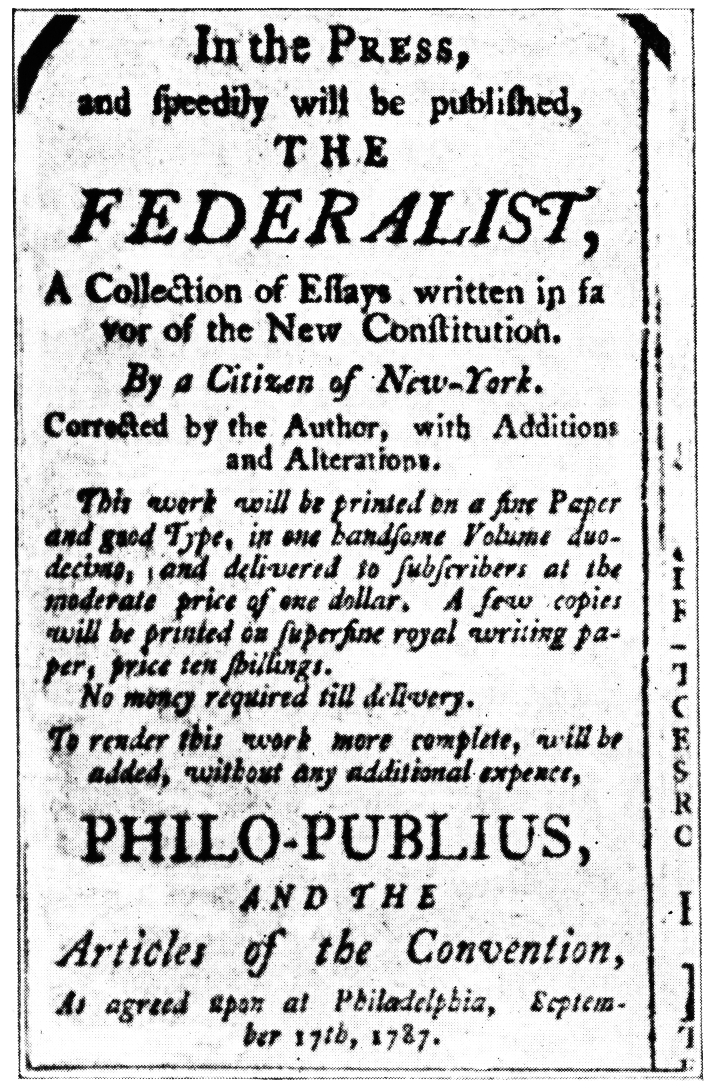 During the debates over whether or not to ratify the Constitution, authors on both sides of the debate wrote a series of anonymous “letters to the editor[s]” of newspapers under various pen names. There were advantages to writing these articles anonymously, of course, when one wished to say controversial things in these debates that could offend one’s friends if they were known publicly. Among these authors were many who had actually named their alter egos after people in Roman history, whose accomplishments they thus wished to invoke in their arguments. The Constitution’s opponents, for example, included “Brutus” (possibly Melancton Smith or Robert Yates or even John Williams), and “Cato” (possibly New York governor George Clinton). These were both names of people who had opposed the Roman monarchy (or at least, a particular manifestation of that monarchy). Thus, this would imply that they were opposed to a repeat of such monarchy in America…
During the debates over whether or not to ratify the Constitution, authors on both sides of the debate wrote a series of anonymous “letters to the editor[s]” of newspapers under various pen names. There were advantages to writing these articles anonymously, of course, when one wished to say controversial things in these debates that could offend one’s friends if they were known publicly. Among these authors were many who had actually named their alter egos after people in Roman history, whose accomplishments they thus wished to invoke in their arguments. The Constitution’s opponents, for example, included “Brutus” (possibly Melancton Smith or Robert Yates or even John Williams), and “Cato” (possibly New York governor George Clinton). These were both names of people who had opposed the Roman monarchy (or at least, a particular manifestation of that monarchy). Thus, this would imply that they were opposed to a repeat of such monarchy in America…
The name “Publius” came from the Roman statesman Publius Valerius Poplicola (or Publicola)
 In more than one way, the pseudonym of “Publius” was a much better-chosen pen name than the unpopular “Caesar.” The authors of the Federalist Papers named their alternate persona after a famous Roman statesman named Publius Valerius Poplicola (the last name is also spelled Publicola). Publius was someone who (along with three other great Roman aristocrats of that time) had helped to overthrow the Roman monarchy. Choosing this man’s name for this purpose was probably meant to suggest an opposition to monarchy, that was as strong as any found among the Constitution’s detractors. This would certainly have been important for an audience that had just fought a protracted war against King George III of Britain. This audience would have hated monarchy almost as much as any of the Romans of these prior times did.
In more than one way, the pseudonym of “Publius” was a much better-chosen pen name than the unpopular “Caesar.” The authors of the Federalist Papers named their alternate persona after a famous Roman statesman named Publius Valerius Poplicola (the last name is also spelled Publicola). Publius was someone who (along with three other great Roman aristocrats of that time) had helped to overthrow the Roman monarchy. Choosing this man’s name for this purpose was probably meant to suggest an opposition to monarchy, that was as strong as any found among the Constitution’s detractors. This would certainly have been important for an audience that had just fought a protracted war against King George III of Britain. This audience would have hated monarchy almost as much as any of the Romans of these prior times did.
Why did these men choose “Publius” as their collective pen name for the Federalist Papers?
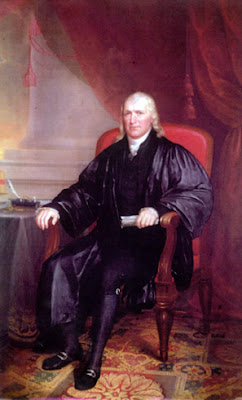
By choosing his name for their pen name, the authors of the Federalist Papers thus implied that they would not be content with merely “kicking out” the British monarchy from American shores, but would replace it with a better form of government that was on a par with the Roman Republic. After kicking out King George III, in other words, they would create a republic of equal (or even greater) stature by adopting a new Constitution, which would serve America‘s interests better than the “Articles of Confederation” that it would soon replace. In the heated environment of this time, the name “Publius” was thus a successful piece of pro-Constitution propaganda – “propaganda” in the best sense of that word. It helped to set the tone for the entire discussion of the “Federalist Papers.” It helped to score a public relations victory for the supporters of the Constitution in this protracted campaign for the new Constitution, by comparing it with the best of classical Roman government. In a country that had an enthusiastic interest in Greek and Roman history – and this is something of an understatement – this was a feat worth accomplishing. Every one of the 85 articles of “The Federalist Papers” was thus signed with this pen name of choice…” Source: https://sparkscommentary.blogspot.com/2017/10/publius-pen-name.html

